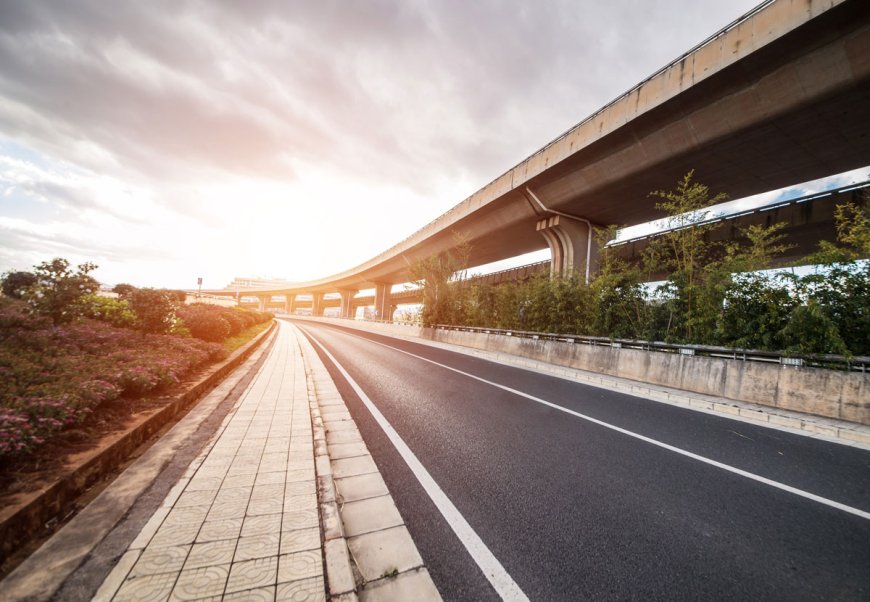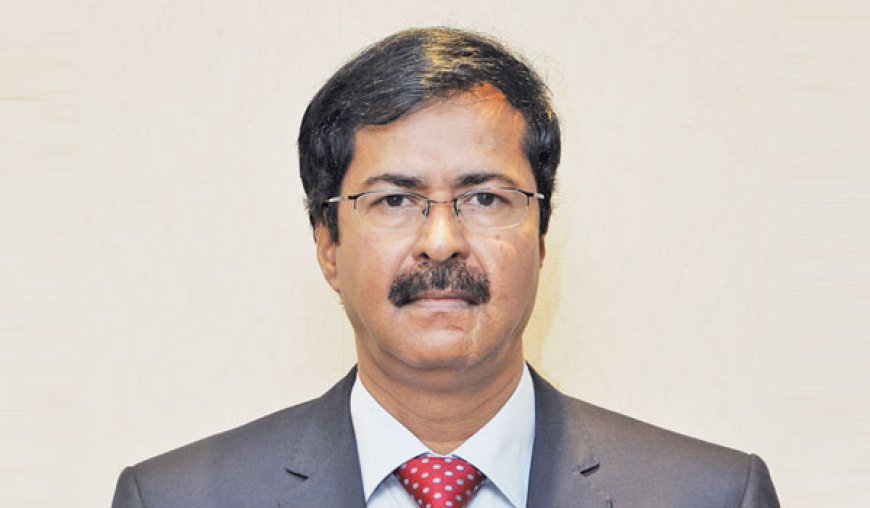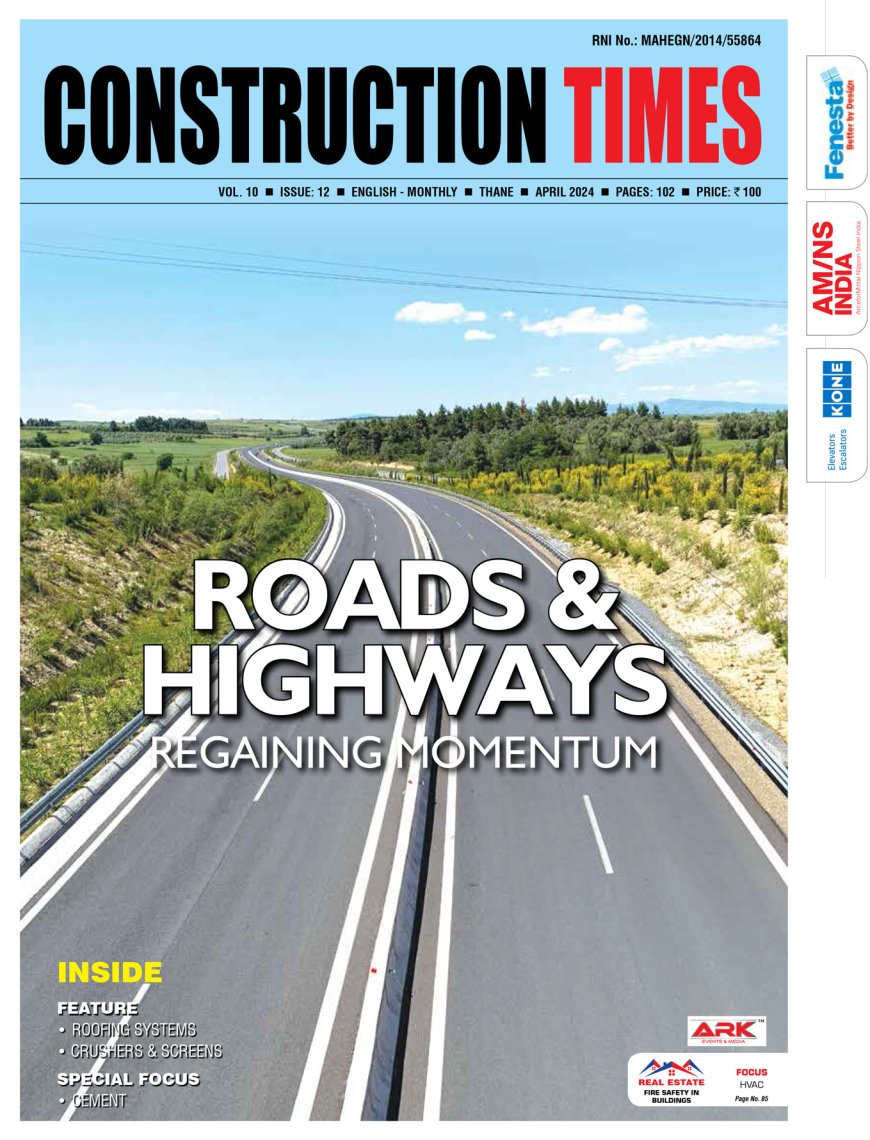Regaining Momentum

The roads sector is set to regain its momentum this fiscal and beyond from an expected increase in project awards and a long-term set target on focus. Construction Times finds out the way forward for the sector and how contractors and other stakeholders are looking ahead.
The latest reports indicate that the Ministry of Road Transport and Highways (MoRTH) constructed 12,349 km of national highways in 2023-24, the second highest in its history. Though this fell short of the 13,327 km of national highways in 2020-21, the coming years are expected to see further increase in highway construction with an increase in awarding process of highway projects post the general elections.
Regaining speed
After the pandemic-induced slowdown, the roads and highways construction has been gradually picking up even though there was a dip last fiscal in project execution due to various reasons. In spite of this, the highway construction has gained a new momentum with the interim budget announcements and record awarding of projects in the last leg of the fiscal 2023-24.
The Interim Budget 2024-25 presented by FM Nirmala Sitharaman has allocated Rs 11.11 lakh crore for infrastructure capex. In this, Rs 2.72 lakh crore is for roads and highways sector. The government is putting highway construction on fast-track with a goal to increase the NH length from the current 1.46 lakh km to over 2 lakh km, with over 10-fold jump in access-controlled highways to 50,000 km from 4,000 km over the next 13 years.
According to market research firm ICRA, allocation to the road sector remained healthy so that the completion targets for the Bharatmala Pariyojana and the National Infrastructure Pipeline (NIP) can be met. The ministry is likely to complete road construction of around 11,500-12,000 km in FY2024 and ICRA expects the execution to grow by 5-8% to 12,000-12,500 km in FY2025.

“The awards from MoRTH are likely to decline by 47-42% YoY to around 6,000-6,500 km in FY2024 compared to 12,375 km in FY2023, mostly on account of low awarding activity in 11M FY2024 amid delay in approval for revised cost estimates of Bharatmala Pariyojana Phase 1 (BMP) and muted project awarding in Q4 FY2024, ahead of the General Elections. However, ICRA expects the MoRTH awards to be around 10,000-10,500 in FY2025 with likely revival in the awarding activity post the General Elections with more than 40,000 km of highways which have been identified but yet to be awarded including pending 8,000 km of Bharatmala Pariyojana Phase-I,” says Vinay Kumar G, Vice President & Sector Head - Corporate Ratings, ICRA.
Challenges & Opportunities
In spite of the government streamlining the overall process of highway construction through policy measures, there seems to be some key challenges to be ironed out. According to Vinay Kumar, Delay in land acquisition is one of the major factors adversely affecting the timely implementation of highway projects in the country. Further, the cost of land acquisition has increased significantly, post the amendments to the Land Acquisition act in 2013. On the approvals & permissions, he adds, “While Right of Way (ROW) of 80% is a pre-requisite for declaration of the appointed date, other issues relating to forest and environment clearances, permissions and approvals related to railways, power, pipelines and shifting of existing utilities are also result in delays in the construction of roads.”

From a contractor’s perspective, Harendra Singh, Chairman & Managing Director, HG Infra Engineering Ltd, highlights some challenges. “In the realm of road and highway sector, challenges include commodity price fluctuations, particularly in materials like steel and asphalt, pose budgetary uncertainties. Prolonged monsoons disrupt project timelines resulting to inflating costs and jeopardizing deadlines. The shortage of skilled labour compounds these issues, necessitating dedicated recruitment and training efforts. Complex financial riders, regulatory approvals in some cases and the alignment of human capital with management vision add further complexity.” However, the company adopts a multifaceted approach, leveraging technology for resource optimization, investing in talent development and upholding ethical practices, which equips them to navigate these challenges effectively and maintain their commitment to excellence in construction.

Shivdutt Das, Executive Director, Vishwa Samudra Group, says, “We have witnessed significant improvements in operational efficiency, particularly due to the initiatives by NHAI. The streamlined processes have notably addressed challenges related to land acquisition and payment flow, positioning NHAI as one of the leading road construction departments globally. However, moving forward, we anticipate challenges primarily associated with the cost of raw materials and potential shortages of stone aggregate in the future.” However, the company has recognized some sustainable solutions to mitigate the challenges of aggregates.
In the wake of the Interim Budget 2024 allocating substantial funds for roads and highways, contractors perceive immense opportunities ahead. “With our expertise and experience in highway projects, we are well-positioned to capitalize on the increased investment in infrastructure. This allocation underscores the government's commitment to improving transportation networks, which aligns perfectly with our core business focus. We are poised to leverage these opportunities to further strengthen our presence in the sector and contribute to the nation's infrastructure development goals,” says Singh.
Sustainable practices
As the government aiming to achieve the net zero goal by 2070, construction industry has a significant role to play in this by adopting sustainable construction practices in the projects. Roads and highways being the major construction segment, can contribute to this cause in a major way. While government has given some directions in this regard, contractors are also adopting sustainable practices in their projects. Singh elaborates, “In alignment with the government's ambitious goal of reducing carbon emissions by one billion tonnes by 2030, HG Infra is committed to embracing sustainable and eco-friendly practices including the utilization of renewable energy sources and the implementation of robust waste management strategies. These initiatives involve innovative approaches such as substituting conventional soil with inert materials in embankments to promote ecological sustainability. We have also introduced Sewage Treatment Plants (STPs) and well-designed drainage systems at construction sites to address wastewater concerns effectively.”
Das explains the company’s unique sustainability initiative in their projects, “In our road projects, be it rural roads, state highways, or national highways, we prioritize sustainability by incorporating green technology from Germany called StabilRoad. This technology utilizes a 100% natural mineral-based additive, activating the existing soil surface and eliminating the need for stone aggregate. This not only accelerates the curing process, ensuring faster project completion but also reduces the need for mountain blasting or mining, thus preserving our natural landscapes and reducing carbon emissions from road trips.”

L&T has taken up a noble initiative of using plastic waste in bituminous concrete, on a trial basis. S V Desai, Whole Time Director & Senior Executive Vice President (Civil Infrastructure), Larsen & Toubro, elaborates on this initiative, “The road pavement consists of base course and wearing course as top layers. These layers are made with hot bituminous mixes and blended with shredded waste plastic derived from LDPE (low density polyethylene) sources such as ‘carry bags’, ‘milk pouches’, etc. The wearing course viz., bituminous concrete, is produced with shredded waste plastic from the hot bituminous mixing plant and is laid using pavers. Currently, this methodology has been employed for laying trial stretches on service roads of highways to assess performance.” Some four to six selected companies involved in selected packages of the Mumbai-Nagpur Samruddhi Expressway and projects under the Bharatmala programme have been assigned to build part lengths of the service roads using this technology.
The road ahead
Government of India has set a target of increasing the length of national highways to 200,000 km by 2037 and simultaneously increase the length of access-controlled highways by more than 12 times to 50,000 km from the current 4,000 km. Further, the ministry plans to increase the length of access-controlled roads which are in general 6-lane or 8-lane highways. Going forward, majority of the greenfield highways are planned as 4-lane or 6-lane or 8-lane roads with land acquisition being done currently for future lane expansions. There will be more such developments to be planned and executed in the coming years. From a long-term perspective, this will create a major opportunity for the contractors and other stakeholders of the sector.
Vinay Kumar says, “With strong order book and significant allocation of funds in the budget, the sector is expected to witness higher construction activity in FY2025. The road execution is likely to be around 12,000-12,500 km in FY2025 compared to 11,500-12,000 km in FY2024.”
“The goal of constructing 2 lakh km of NH network by 2037 is undoubtedly ambitious, but we believe it is achievable given the commendable ecosystem created by NHAI. NHAI's initiatives have streamlined processes such as contractor scrutiny, bidding, and financing, making it easier and faster for contractors to contribute to the construction of highways across the country,” says Das.
The goal is set and the fund allocation is in place. The way the highway construction is progressing currently, the target is achievable as per the plan, provided there are no unforeseen circumstances arising.








